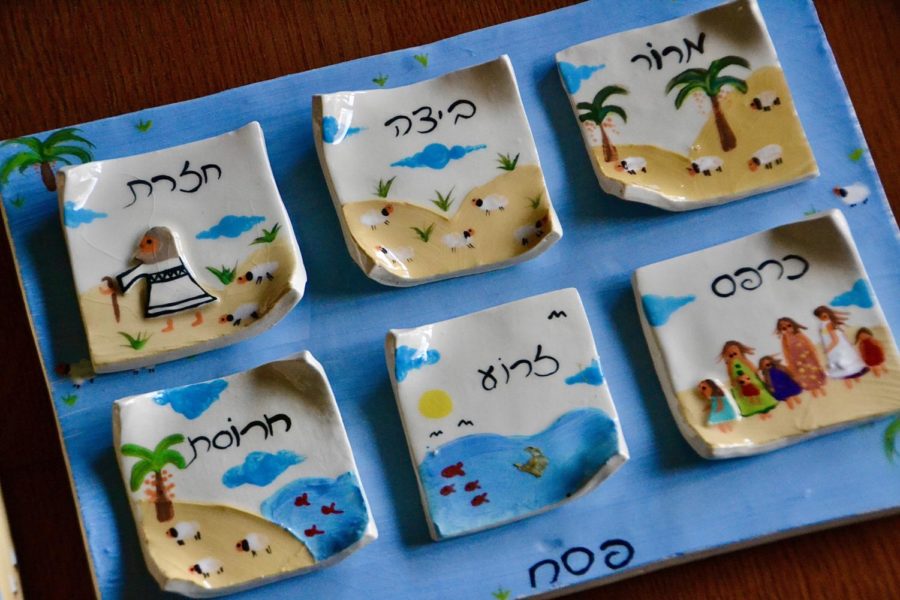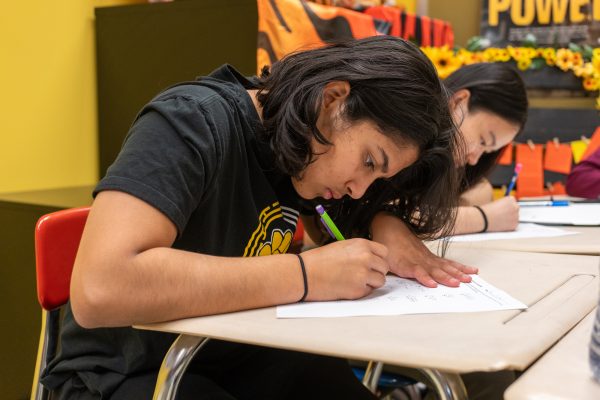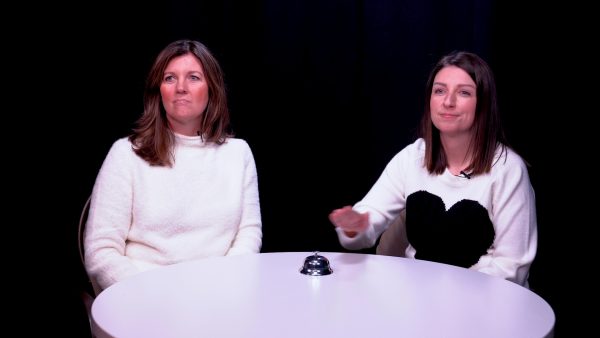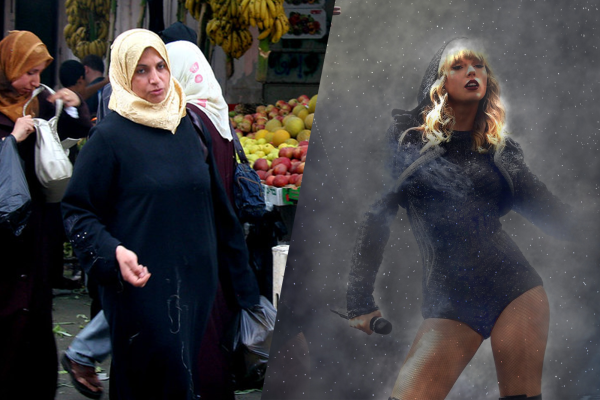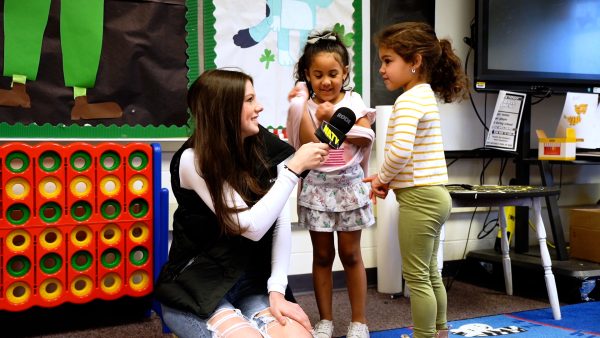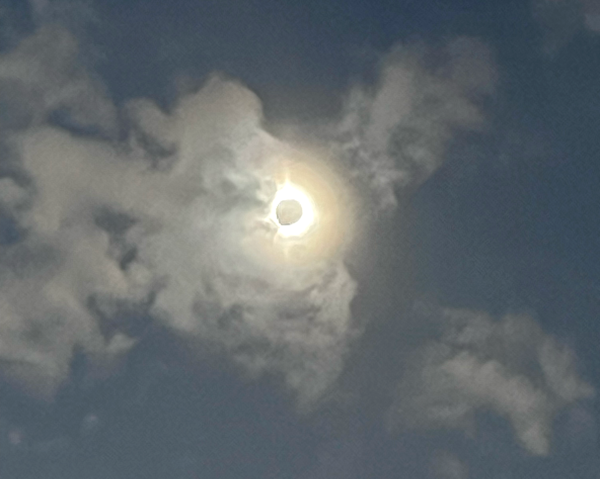Maybe Next Year in Person?
It was our first major Jewish holiday in lockdown, but we’re hoping this time it can be the last.
A photograph of my family’s unconventional ceramic seder plate for Passover.
“Next year in Jerusalem? Maybe not likely. At the very least, next year in person.”
That’s what we said last year. Looks like we have to say the same thing again this year.
The Jewish holiday of Passover begins on Saturday, March 27 at sundown. Last year, Passover was the first holiday that we had to celebrate in quarantine. I’ve celebrated Passover in numerous places: at home or in Philadelphia with my godfamily, in Connecticut with my cousins and grandfather, in Chicago on Northwestern University’s campus with a bunch of strangers. Last year it was just my sister, parents, dog, and me. This year will not be much different (other than the addition of a second dog).
Passover, or Pesach in Hebrew, is the holiday that celebrates the freedom of the Jewish people from the land of Egypt and the rule of the Pharaoh. The Jews were forced into slavery because the Pharaoh feared that the Jews would outnumber the population of Egyptians in the area. The Pharaoh also decreed that henceforth, every son born of a Hebrew would be drowned in the Nile. That is, until baby Moses, a Hebrew, was sent to the doorstep of the Pharaoh as an orphan and adopted by the Pharaoh’s daughter.
Moses grew up not knowing he was a Jew until he received a message from G-d via a burning bush. This bush (that also spoke) told him to lead his people out of Egypt. Moses marched up to the Pharaoh and ordered him to let the Jews be free. He declined, and G-d sent down the first of ten plagues–one for every time he said no to Moses, and each more terrible than the last.
During the tenth plague (the death of the firstborn child), the Angel of Death would pass through and take the souls of the firstborn, but G-d told the Jews to mark their door with the blood of a lamb so the Angel knew to pass over their homes (hence the holiday’s name, Passover). After the tenth plague took his son, the Pharaoh finally caved and let the Hebrews go, and the Jews began making their way to the land of Israel as quickly as possible.
Every spring, the Jewish people celebrate our ancestors’ freedom from bondage by recounting this story of Passover and hosting a festive meal called a seder.
For Passover dinners, we have a large plate on the table called a seder plate. There are six spots on the seder plate for specific symbolic foods. Bitter herbs (maror) remind us of the bitterness of the slavery in Egypt; Charoset, a mixture of apples, pears, nuts, and wine, represents the brick and mortar the Jews used in their years of labor; parsley (karpas) represents the backbreaking work our ancestors had to endure. A hard-boiled egg (beitzah) also sits on the plate to represent the pre-holiday offering that was brought to the Holy Temple. Lettuce (chazeret) has its own spot on the plate, but it falls under the category of bitter herbs because of the stalk from which it grows. This is a double-reminder of the bitterness of slavery. There is also a shank bone (zeroa) on the plate which alludes to the lamb’s blood that was marked on the doors of the Jews so the Angel of Death could pass over their homes.
The most iconic Passover food, matzah, gets its own plate at the seder. Matzah is essentially a cracker without yeast. When our people had to escape Egypt in the middle of the night, they did not have enough time to let their bread finish rising, so they had to eat unleavened bread on their journey to Israel.
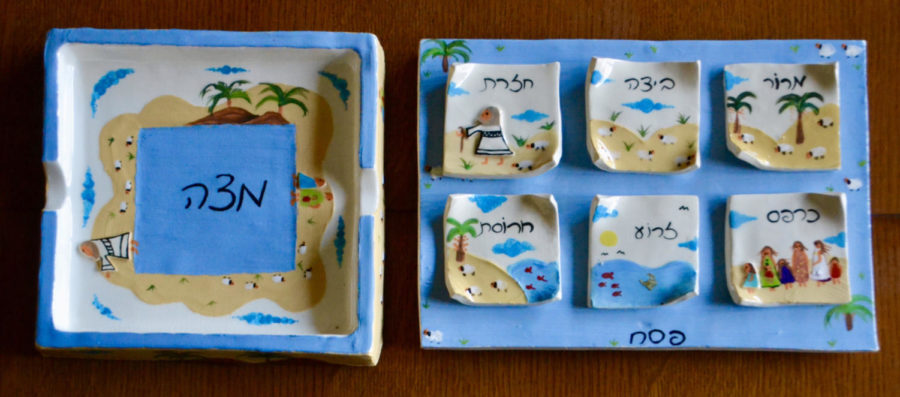
These are the most common Passover traditions we keep, but many more Jewish traditions from thousands of years ago have evolved. For example, we read the story of Passover before the seder from the Haggadah, but my family reads from a Haggadah created by the producers of the TV show The Marvelous Mrs. Maisel.
Another modern tradition my family and I have started to keep is the addition of an orange or clementine on the seder plate. The story we like to base our reasoning on is when an Orthodox man said, “A woman belongs on the bimah (pulpit) just like an orange belongs on a seder plate.” This story is not actually true, but since we heard about it, we have started to put an orange on the seder plate in support of feminism.
Judaism can be a very traditional religion, but it can also be very forward-thinking. Many modern Jewish communities are open to and accepting of the LGBTQ+ community and other marginalized communities. I believe we are accepting of any oppressed communities because we know the terrible feeling of oppression.
This year at home, but maybe, just maybe, next year in Jerusalem.
The holiday is a reminder that even when the Jews are facing oppression, they are the chosen people (according to the Torah), so they will survive no matter what. The phrase “Next year in Jerusalem” is a reminder to one day return to the land that freed us in the first place. Every year, we celebrate our survival and resilience, and that has been especially important this past year.
Jews, sadly, are used to experiencing collective traumas, but we have been able to get through them every time. But this year, everyone across the world, Jewish or not, has experienced a collective trauma. We have spent so much time away from our families and loved ones. But there is finally a light at the end of the tunnel.
The balance between traditions from thousands of years ago and progressive actions is very special in the Jewish community. But no matter what we do, we do it together. With friends and family, with strangers, with anyone. We’ve gone through a whole year of Jewish holidays without our friends, but because our community is so resilient, we have found so many ways to still be together.
Thousands of Zoom calls and a whole year later, we unfortunately still have to spend Passover physically alone, but we have so many means of connection. This year at home, but maybe, just maybe, next year in Jerusalem. At least now we know there’s hope.
Below is a demonstration of one of my favorite Passover recipes.

Following her stint as the Co-Editor-in-Chief of the NAEye sophomore year and Junior Photography Editor last year for the Uproar, Jess Daninhirsch is ecstatic about being the Photography Editor and a staff writer this year on The Uproar. Jess dreams of becoming a journalist and a photographer one day and documenting the world. Outside of school, Jess actively participates in BBYO, an international...

